Back in 2014, Craig Calvert had explained the visual effects work of Mr. X (now MPC) on Robocop. He went on to work on American Made, Roma, Creed II and Foundation.
Martin Hesselink started his career in visual effects over 20 years ago. He joined the Mr. X team in 2009. He has worked on projects such as Pacific Rim, Pompeii, The Shape of Water and Raised by Wolves.
What is your background?
Martin Hesselink // I graduated from Sheridan college for Classical Animation, and Seneca college for Computer Animation. Currently I’ve been in the VFX industry for over 20 years. Starting as an animator, working my way up to Supervisor and now head of the Performance department at MPC (Toronto).
How did you and MPC get involved in this series?
Craig Calvert // We have strong relationships with the production companies involved through past projects together, so when they reached out to ask for our involvement, it was a no-brainer. With over 400 shots across epic battle scenes to recreate key characters, we aligned with client production to capture the essence of the game whilst bringing the story fans of the game know so well, into a more realistic setting for viewers.
Martin Hesselink // MPC is well known for high quality creature animation, and we have an incredible group of executive producers led by Luke Groves. We were approached early on to do some key sequences on the show. Our team, who happens to be big fans of the franchise, jumped at the opportunity to work on a photoreal Halo series. I can still remember the shock on my face when Luke approached me about being part of the team. I was honored to say the least.
What was your feeling to be part of this iconic universe?
Craig Calvert // Many moons ago, I stood in the launch-day lineup to buy the Xbox, and then played Halo an obscene amount for years afterwards. I was in love. So, when the time came, I absolutely jumped at the opportunity to help bring Halo to the screen and share my excitement with the team.
Martin Hesselink // I was blown away at the chance to work on this iconic franchise. With such a wide range of characters and depth of story canon, it was destined to be great. I knew it also came with a ravenous fan base, and that was certainly part of the challenge. I remember enjoying the first Halo game thoroughly and thinking what a cool series it would make. Amazing to see how some ideas manifest themselves in your future. Assembling these incredible shots with Master Chief was a dream come true.
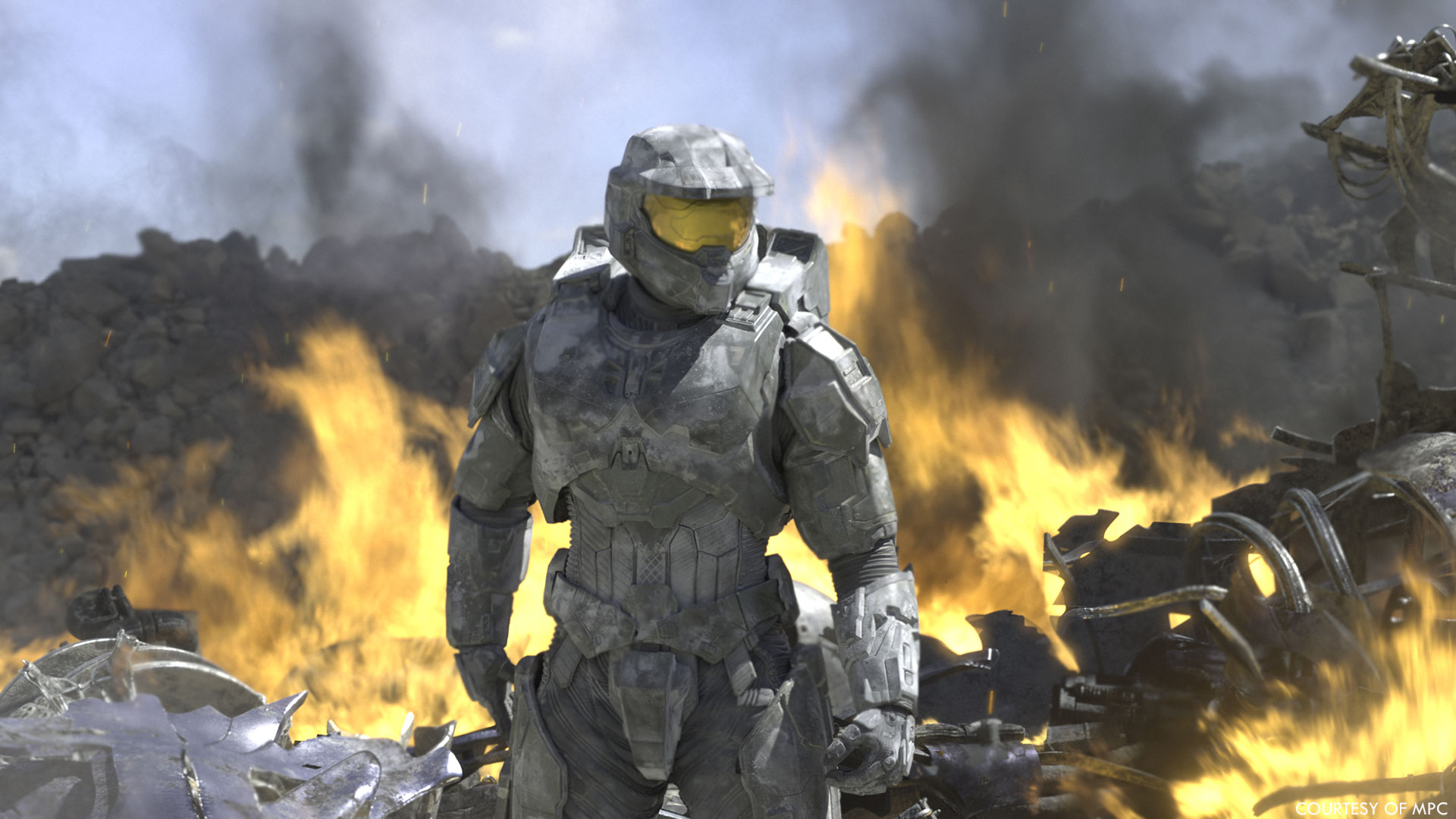
How was the collaboration between the showrunner and the VFX Supervisor?
Craig Calvert // For our efforts we dealt mainly with the show wide VFX Supes, who would relay the notes and spirit of the collaboration to us.
What were their expectations and approach to the visual effects?
Craig Calvert // Halo has always been about fantastic but grounded sci-fi. Our mandate was to bring the Universe into a grittier filmic world and keep realism at the forefront. But as always it was to make it as awesome as possible!
How did you organize the work with your VFX Producer?
Craig Calvert // Since this was a hero creature-driven show that would require a ton of iterations, we scheduled it by prioritizing the first looks of anim blocking to jumpstart any notes, and once we got the edit updated and received feedback from the clients, we moved into refining animation. We found that by feeding them versions as early as possible for all aspects, we could force any issues into the light and give us time to address them. COVID-19 was a definite factor affecting the schedule, as the show was delayed/extended by over a year. To support this, we decided to slim the team down to the core leads for a time which helped us focus on development for the challenges these shots present. That was an unanticipated blessing, as it gave us the time to really iterate and refine areas that needed it.
How was the work split between the MPC teams?
Craig Calvert // The Toronto team began earliest, developing the Prophets, Sangheili (Elites) and Lekgolo characters, Spartan digidoubles, and many of the various weapons and plasma effects shared with other vendors. They shouldered all of the creatures and digidouble work for the brutal initial attack on Madrigal with all the Elite variations and damage states, as well as the Kaidon in the cave watching Master Chief. The Lekgolo attack was another standout sequence for Toronto, with the swarming and grappling of unsuspecting Marines really leaning into some of the famous horror elements of the series. And a real joy to create were the Prophets, which the Toronto team developed and handled throughout the entire show. Much care was taken to bring forward the ancient feel and underlying menace they present, especially the Prophet of Mercy.
The London team had a focused task of bringing the exciting episode 5 Eridanus battle to life. The battle between the Covenant and the UNSC saw close quarters fighting between Spartans and Covenant forces, digital doubles, gore effects, energy weapons and the exciting arrival of Atriox! It was a chaotic, high-energy sequence that really showcased the power of the Spartans and brutality of the Covenant.
Martin Hesselink // There was a good amount of run up time for us to do valuable R&D on the show. As you can imagine there’s a lot of bugs to work out in season one of any series. And this show has several unique characters that needed to be defined with respect to canon but adapted to live in the gritty live action world. Most of the episodes had small set piece VFX sequences that would depend more on various departments or skill sets. So much of the work could be pursued simultaneously, with small, dedicated teams. There were only a few large-scale episodes with big battles that required more organization and brute force to get through. Our teams did a fantastic job.
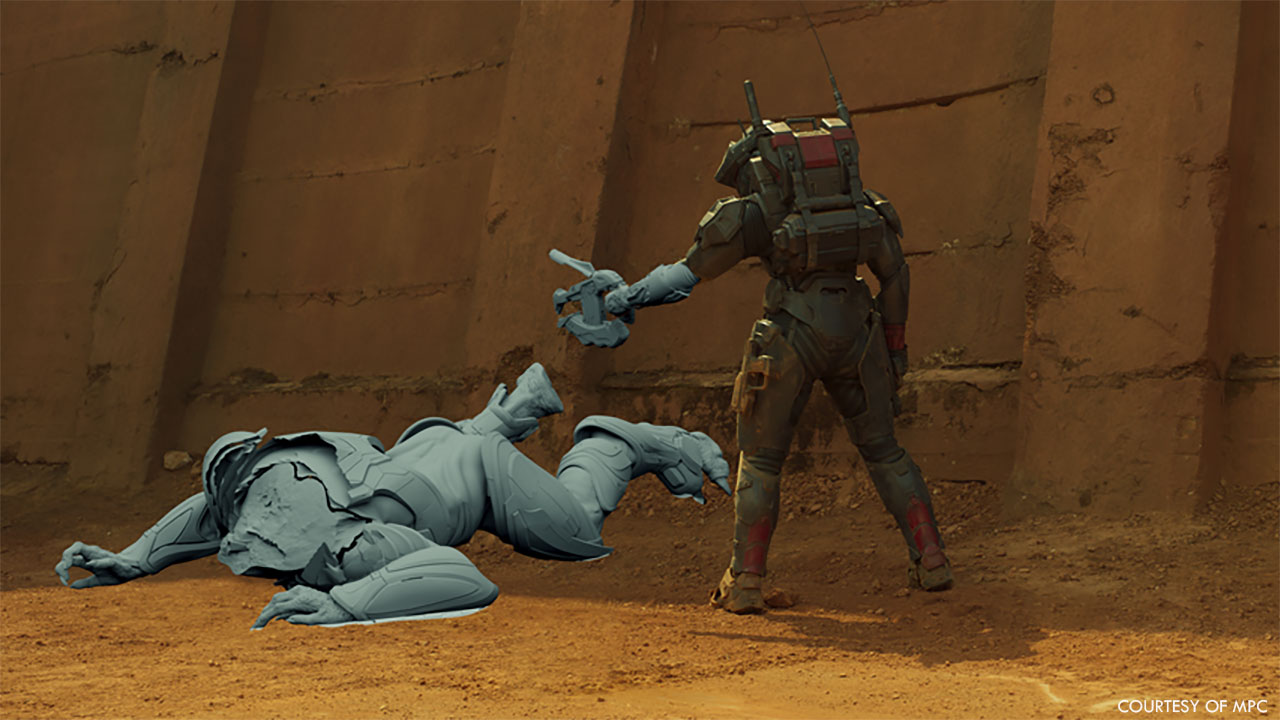
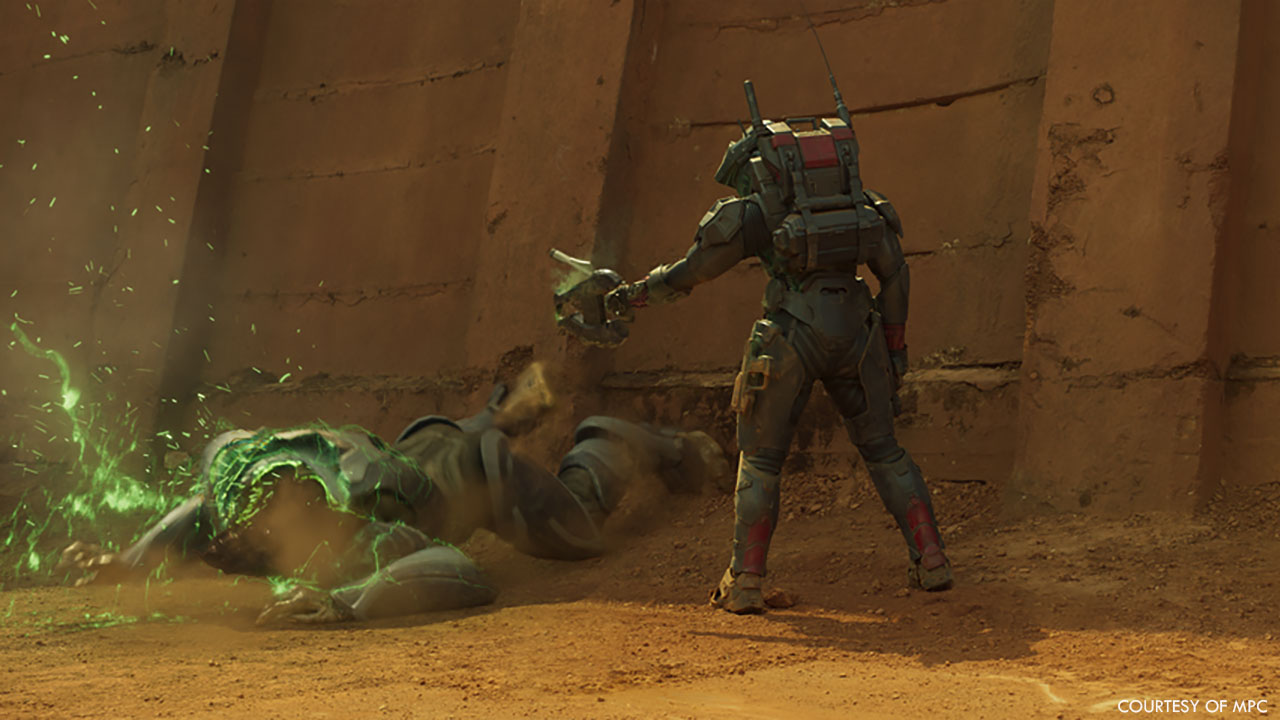
What are the sequences made by MPC?
Craig Calvert // We touched every episode in the show in some fashion, with a focus on character/creature work. Standout sequences for MPC were the Madrigal battle, Oban abduction scene, Lekgolo swarm attack, Cortana visualizing John’s house, the Eridanus battle, Spartan gym fight, and all the interior shots for the finale battle. MPC was also responsible for every Prophet shot throughout the show.
Can you elaborate on the design and the creation of the Covenant creatures?
Craig Calvert // MPC started with concepts provided by the art department and began the long process of refinement and testing. For the Elites, certain aspects were clearly inspired by elements in the wider Halo Universe (like the core designs of their bodies and faces) while the armour styles were fresh concepts. Even with the introduction of new designs, we were constantly referencing back into the catalog to find inspiration for details to include for completing a weapon or patterning an armor plate.
The Prophets are pivotal characters and loved (hated?) by fans of the series, and we poured ourselves into bringing them to life. There were practical puppets built for onset use, which we then later augmented or replaced with CG. Notably their heads and necks are full CG, enabling them to articulate and nuance in ways the puppet could not. The Prophets of Truth and Regret stayed fairly true to the practical designs through our refinement process, but Mercy got a lot of extra attention to really elevate his feel and bring out his aged, cataract-ridden form.
Martin Hesselink // There’s so much canon on the designs of the Covenant, it was a question of how close to the source material do they want to get, and how much room was there to explore and enrich. We did several early tests both animated and look dev to see what range best suited the show. It’s a tricky business to bring game characters to our world. The fun flashy moves and acting of the game don’t hold up in live action. Meaning we had to define it for the viewer in a pleasing yet respectful way.
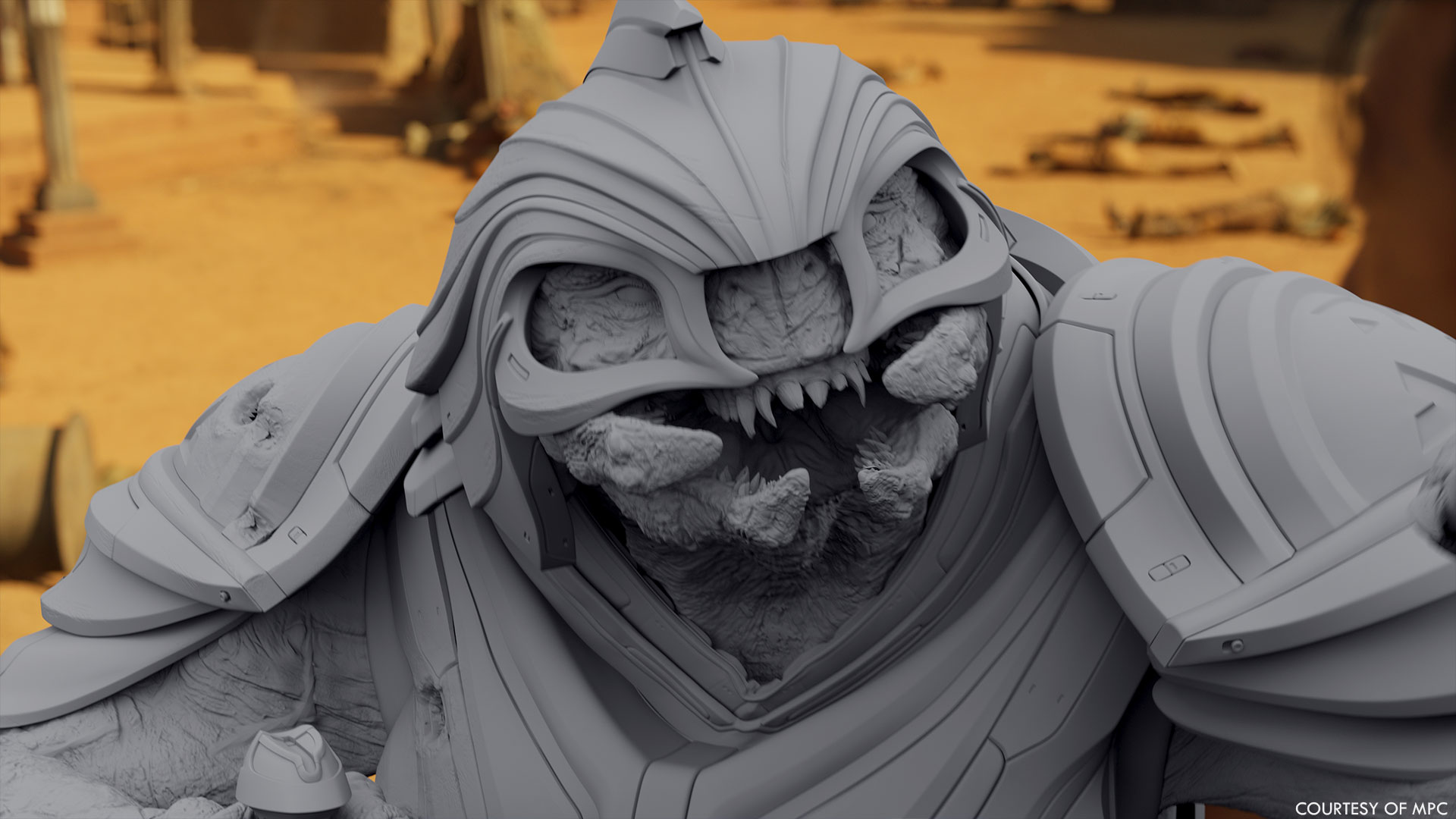
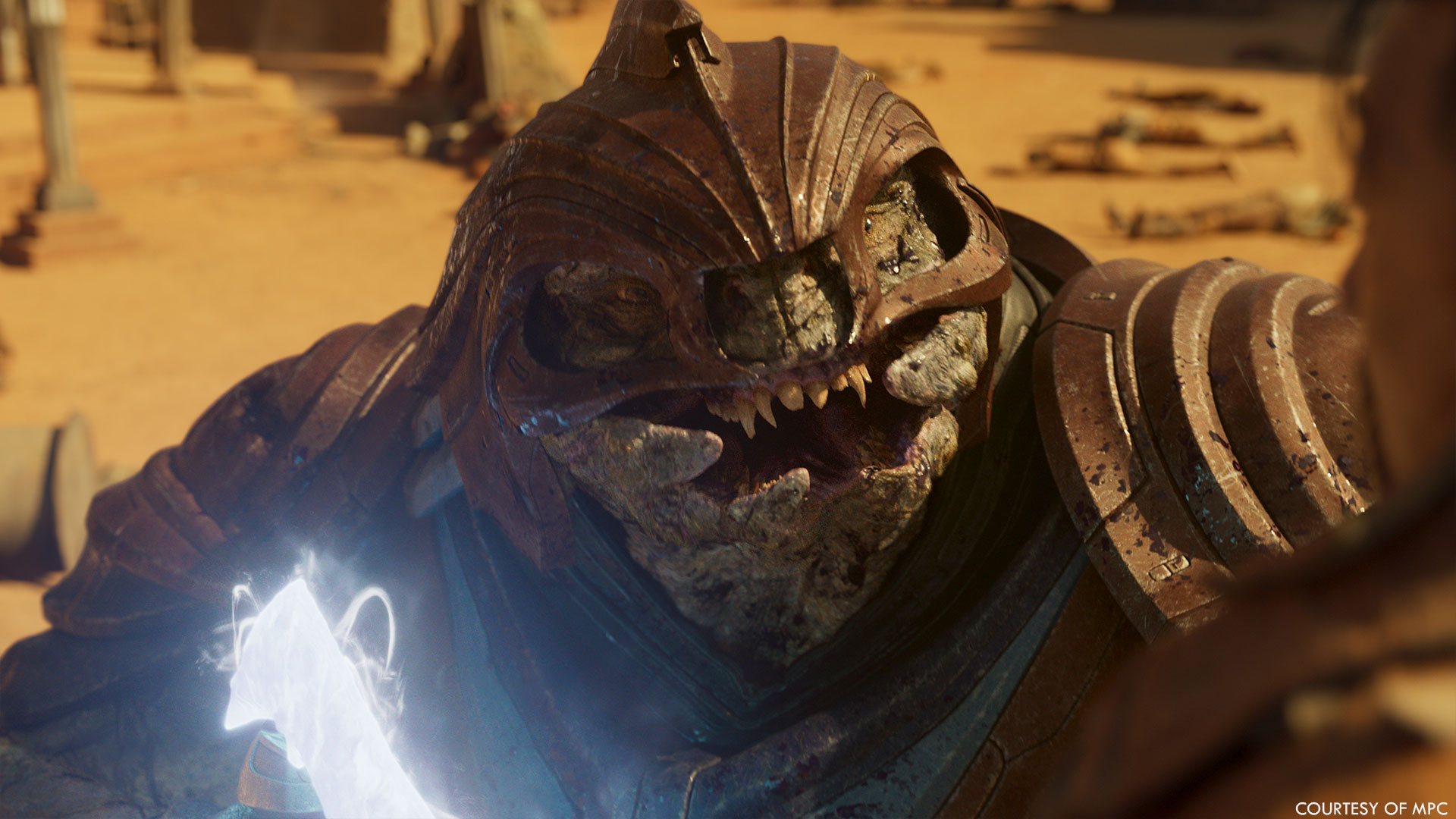
Can you tell us more about their rigging and animations?
Martin Hesselink // We used a combination of motion capture and keyframe animation for the Covenant movement. With a custom FACS-based face rig on the Prophets. The client provided facecam footage of the actors for dialogue reference, which we interpreted into the Covenant equivalent. A fun challenge when one of your characters has fingers for a mouth. The rigs were straightforward for the most part, with a lot of extra controls for the face and armor. Except for the Lekgolos, those were an act of raw creation. Not snakes, nor-worms, deadly and hive-minded, they presented a much more complicated problem. We used a combination of procedural Houdini simulations, sometimes guided by keyframe animated targets. There were also shots we handled solely with Keyframe animation for more specific interaction and art direction.
What kind of references and influences did you receive for the animation?
Martin Hesselink // Most of us were fans of the material before the show started, so there was a consensus on how the characters should feel and act. However, dialing in the physics of each character was a challenge and took some time, whether it was the Elites, who are enormous, strong, fast, and agile. Or the swarming Lekgolos that could be deadly singularly or attack in a coordinated swarm. It was further complicated by the ask that they primarily travel along the ceiling. The FX team did an incredible job of swarming the lekgolos through the environment and even forming tentacles to attack soldiers on the plates. Truly horrific. The elites took on a very heavy, athletic persona due to their size and armor. It was an interesting exercise to figure out how they would believably speak the intricate Sangheili language with mandibles for a mouth. This is an instance where we strayed from canon a little for functionality. Let the bottom two mandibles swing inward the way a thumb might roll into the palm, to form more complicated words and not just chitter horizontally. For the Prophets, we took our initial acting queue from the puppet version in the plates but then gave the moves more purpose regarding the dialogue, eyelines, and overall character we were creating. The client also provided facial witness cameras of the voice actors performing their lines. We referenced what we could from that, adapting their facial nuances to work with their Covenant counterparts.
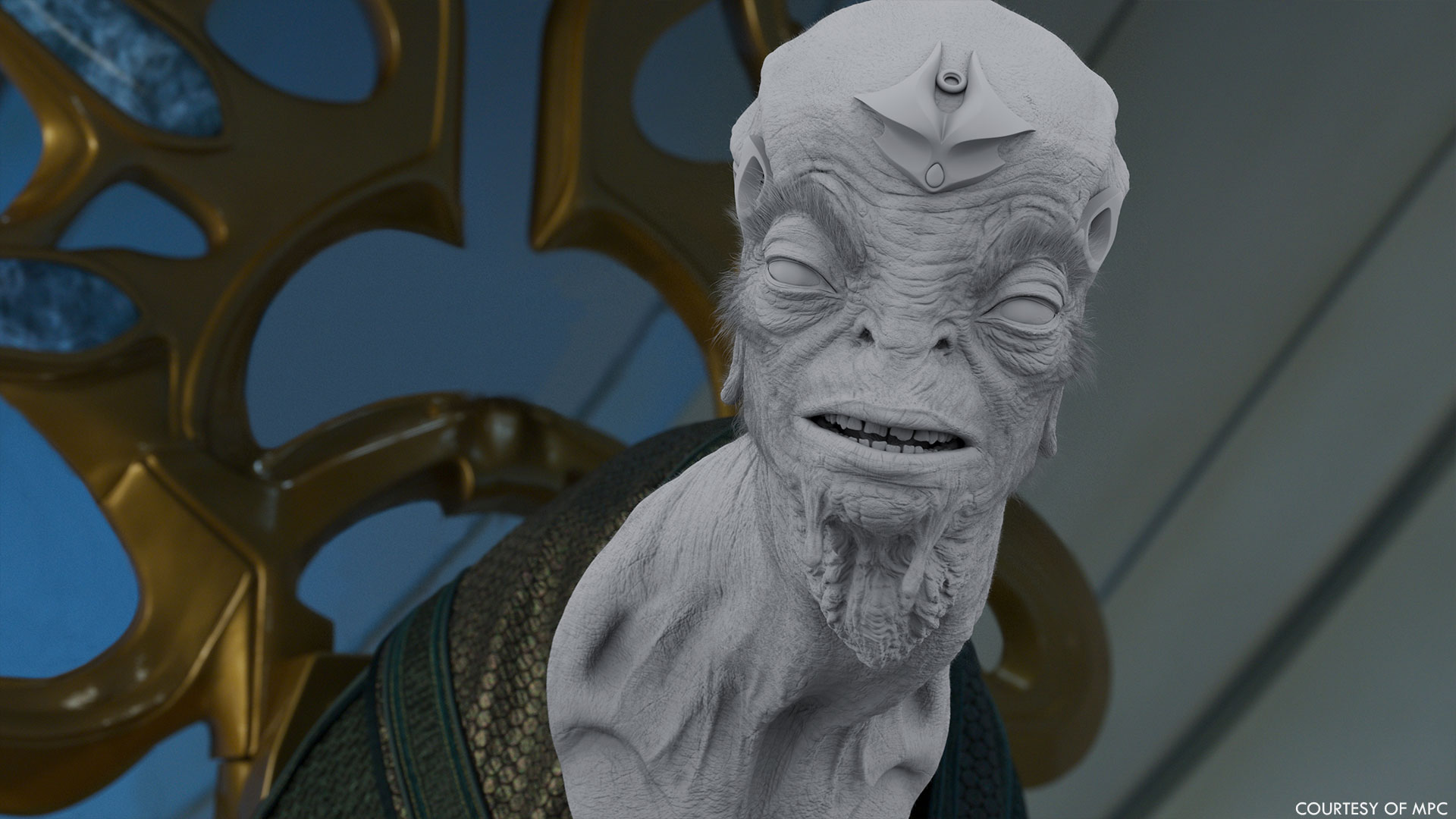
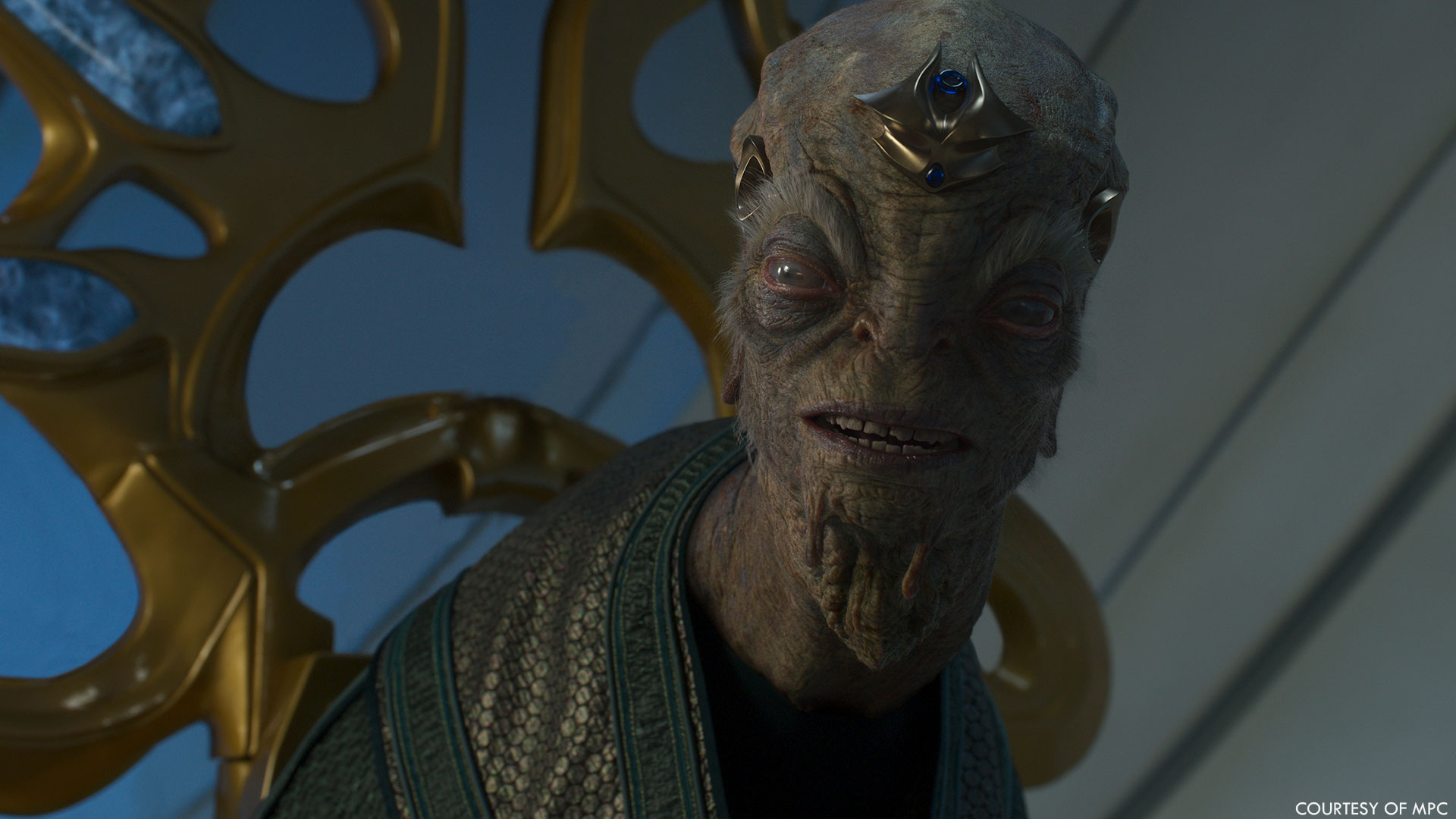
How did you create the various textures and shaders for them?
Craig Calvert // Some of the base look and colouration of the various creatures was established by the client through the practical puppet builds, which we used as a style guide to build upon and refine the look. The Prophets and Lekgolo had great examples of onset reference for us to carry to the next level.
For the Elites we were tasked to develop a range of unique skin colour and patterning types, which we did a series of concept development submissions. We settled on a core 5 base looks that could be altered to give variety if needed through hue shifts, stripe choices, and decal additions of scars, scorch marks, dirt and blood. This included unique scale sculpts and face/mandible structure. For hero Elites that had up-close dialog, we would spin-off a variation as a unique asset and further refine.
Martin Hesselink // The shaders were a multi-layered approach. We drew a lot from the canon initially. Then we adjusted the look dev to the client’s tastes. We focused on making them look old and unique. Adding in all the little details like liver spots and micro fuzz on the face. Then we test lit them in multiple environments from the show to get a broad picture of how they’d appear. Producing contact sheets for each character.
How was simulated their presence on set?
Craig Calvert // Stand-ins, puppets, and stunt performers were all used extensively throughout the show to help block the action, provide lighting reference, and guidance for the actors to interact with. We never saw a grey suit or eye-line armature that wasn’t appreciated. A running joke as the edit was coming together was that a favourite shot was this epic closeup of Atriox glaring at Master Chief. Which of course was nothing but a bar with two small orange balls on it for the longest time! Movie magic.
Martin Hesselink // For the Prophet shots, they had full-scale thrones on a hydraulic base. The full-body puppet version of the character uses long armatures for the neck. An operator from behind the throne controlled these. No animatronics on the faces, as we were going to replace the heads in post.
The Elites were represented on set by stunt actors on stilts. Mainly to get the approximate height and eyelines correct. Their movement was too difficult and unstable to get usable actions for reference.
There’s no way to simulate a Lekgolo swarm on set, and we should all be thankful to be spared that horror in real life. However, they did string soldiers up on wire rigs to get some relatable action involved.
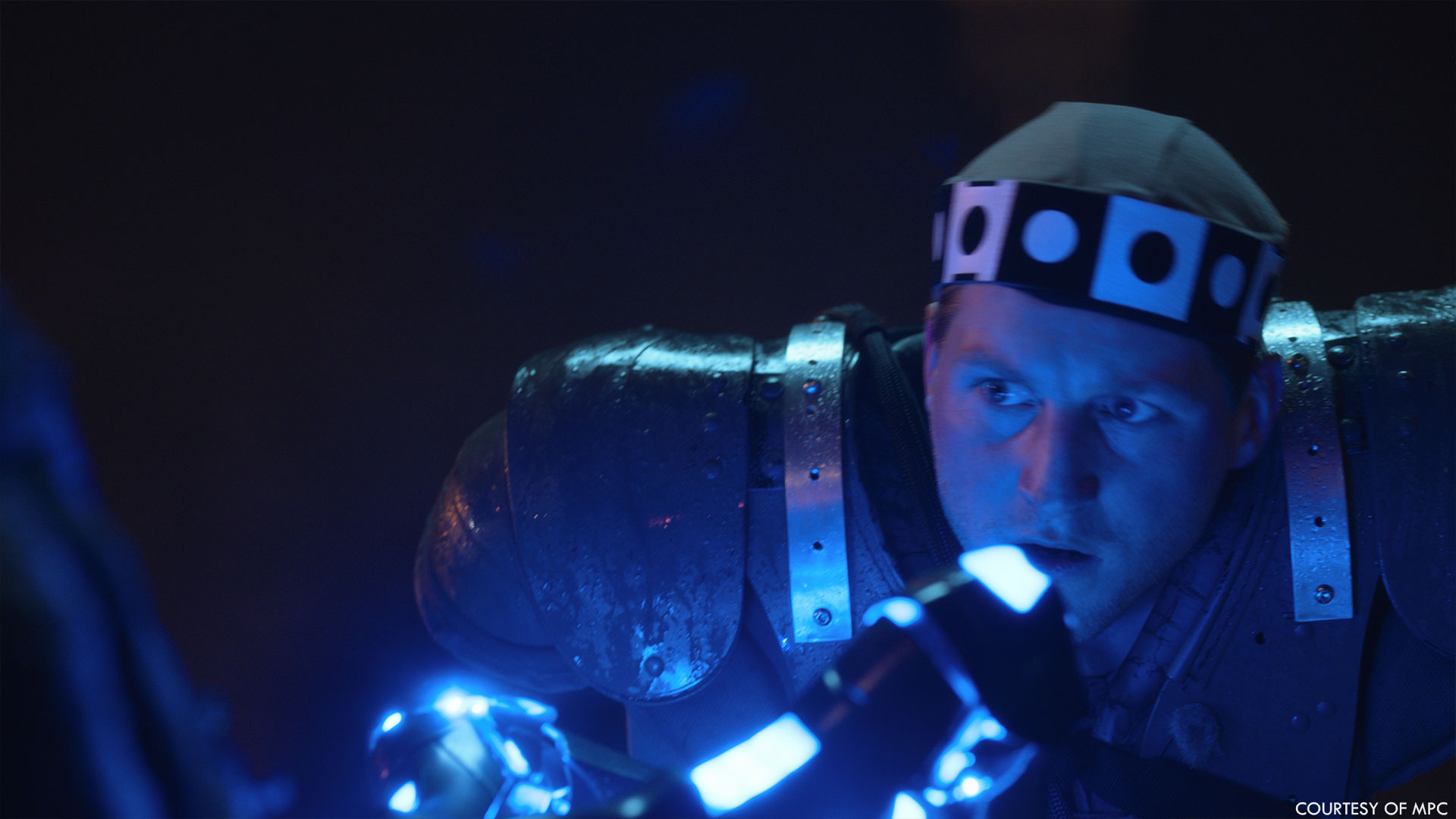
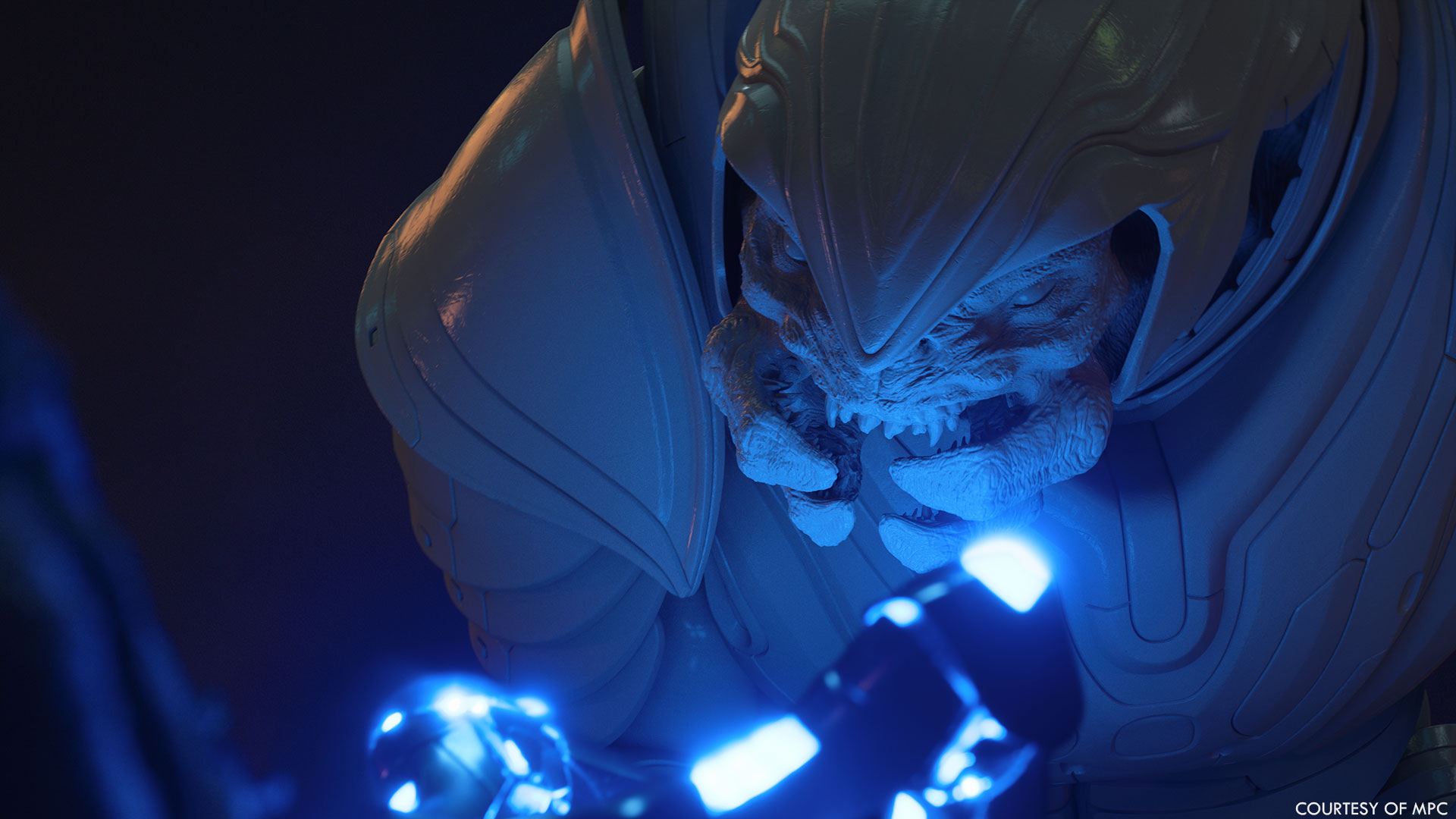
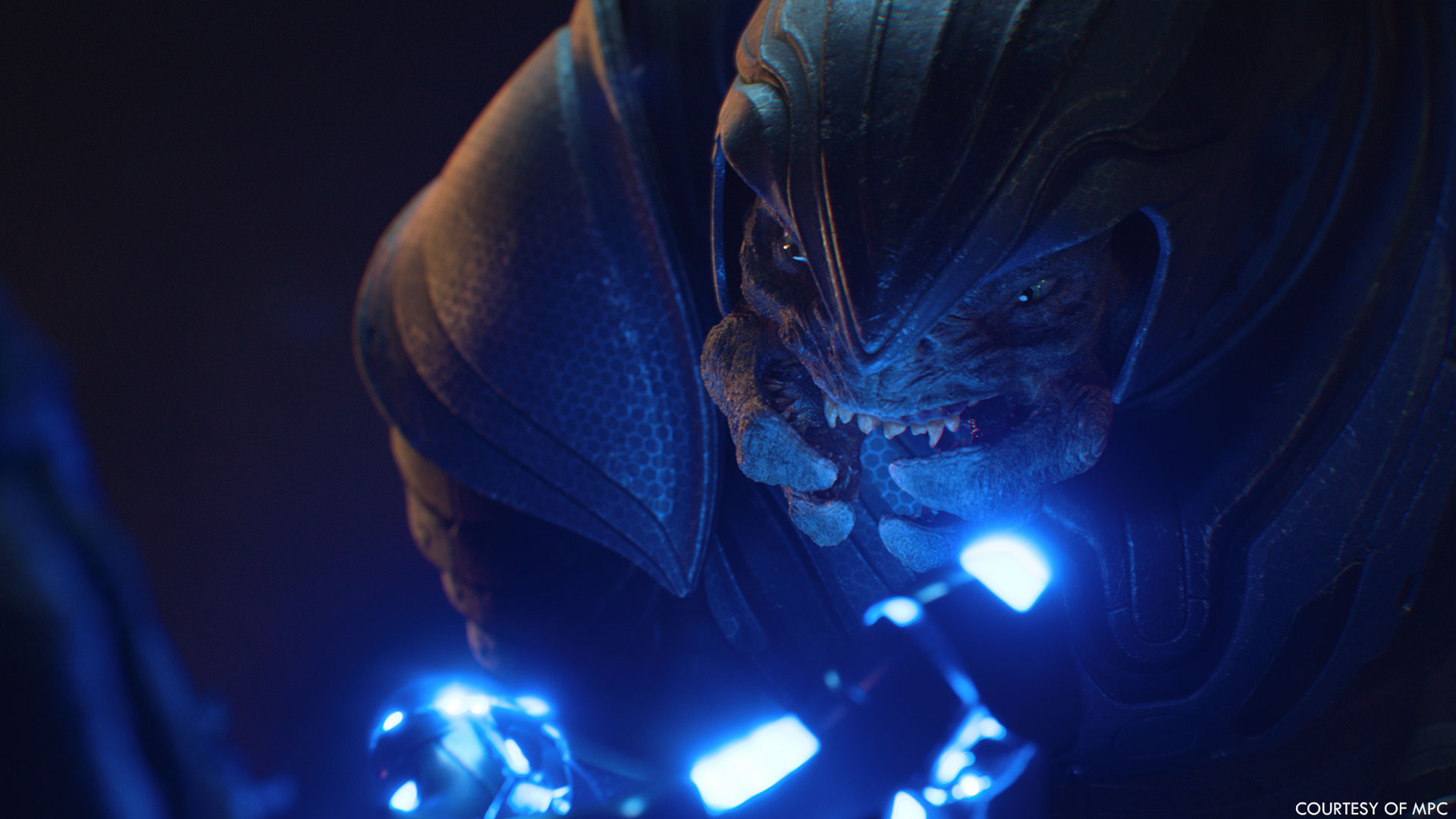
Which creatures were the most complicated to create and why?
Craig Calvert // Every creature has its own challenges, but the greatest amount of refinement went into the Prophet of Mercy, for the simple reason that he just had to be great. We went into this show knowing what an important character he is and set ourselves to the task of developing as photoreal and nuanced a creature as we could. The model development, skin revisions, rigging refinement, performance animation, and FX finaling were all incredibly challenging and constantly worked on throughout. It was very rewarding to look back at earlier versions that were arguably good and see just how much farther we took him to the final because we never stopped improving.
Martin Hesselink // One would think it was the Lekgolos, but the truth is each character had their own journey on this show, and each was as challenging as the next for different reasons. The Lekgolos, while technically magnificent, was an easy crowd pleaser due to their uniqueness and interactive chaos. It was a challenge but also so much fun bringing them to life. The Elites had to make sense physically while being threatening and work in the confines of the plate action. They featured the most heroic actions of the series and would be seen in multiple interactive lighting environments. The Prophets had these long monologues that would have to hold up to viewer scrutiny at close range in 4K. And deliver a strong facial performance to compliment the alien language they were delivering. It’s not an easy task to make a CG character truly conscious and believable, speak in a foreign language with visible underlying intent.
Can you tell us more about the creation and animation of the worms?
Craig Calvert // The Lekgolo attack in episode 3 was a super fun and challenging sequence. Those swarms were procedurally driven, able to flow across surfaces and track towards targets, pushing through openings and around obstacles. The FX team really pushed themselves to simulate the movement styles established in our test anims, and keep the toolset flexible to address client notes and direction. Animators were able to use low-res proxy tentacles to block the shape and timing that would later be flooded with procedural worms in FX. For hero and specifically directed moments, individual worms were animated grappling and biting the Marines.
Martin Hesselink // Oh, the Lekgolos, they still haunt my dreams. Ha! As with all our characters, we did several iterations of keyframed movements to get sign-off from the client as to their general motion and behavior. With this in mind, the FX department then started crafting the Houdini simulations of the swarm. Some shots required keyframed ‘target’ animation for tentacles or adding a few extra keyframed lekgolos to sell the contract or shape. The client was very specific that the Lekgolos should not look specifically like a worm or snake but take the horrifying nature of both movements and combine it into something unique and threatening. While still having the ability to act on its own or in a swarm.
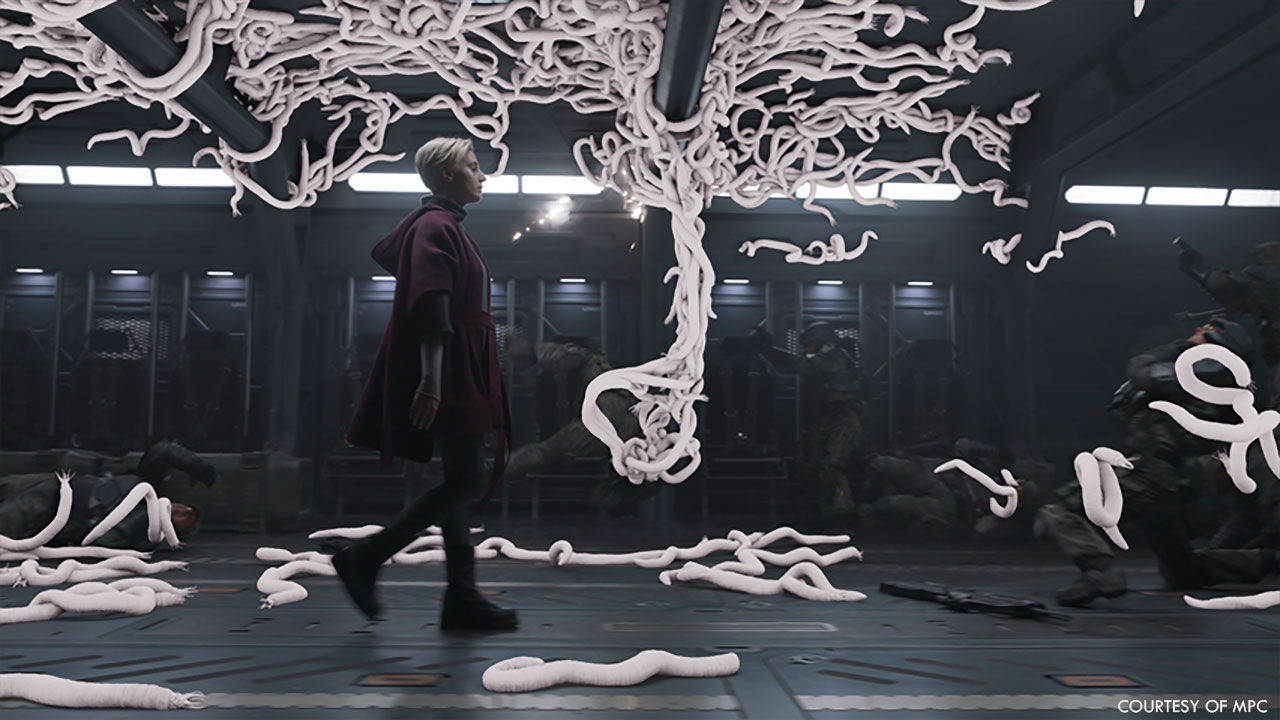
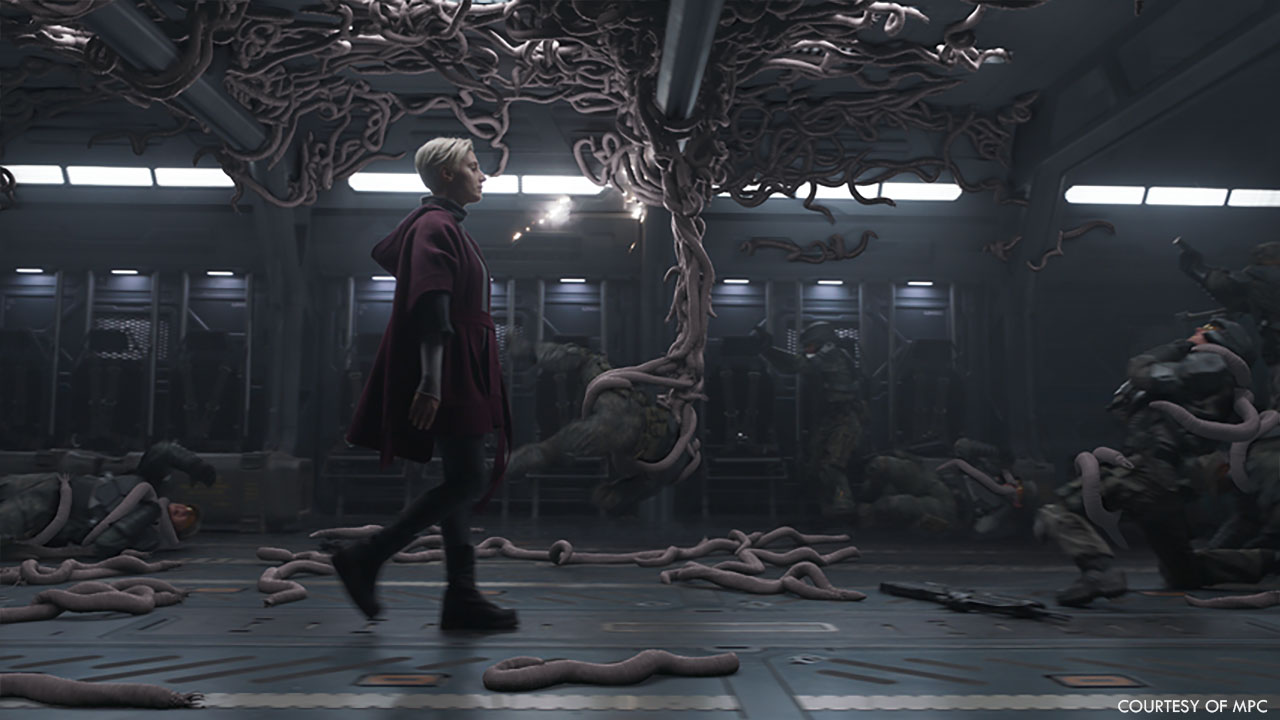
How did you create the various vehicles?
Craig Calvert // Halo was such a huge show that various vendors were tasked as being the primary on certain asset types. Vehicles were a category of asset that were initially developed at other vendors, and then shared out to the group. MPC ingested these assets and worked them into our pipeline, making any modifications needed to fit the shots.
Martin Hesselink // The vehicles were created elsewhere. It’s one of the shared assets on the show that we picked up. Some assets like the Warthog were most likely started using the models from the games and then modified for higher resolution.
Can you elaborate on the design and creation of the weapons?
Craig Calvert // MPC was responsible for most of the weapon assets in Halo season 1. The weapon designs draw from well-established canon, so it was usually less of a design aspect and more of implementing and making feel real. For some of the covenant weapons we refined details to fit better within the look of the show, but the core styles remain true. The main concept development we did was for the energy sword blade. This iconic weapon went through many, many iterations to develop the look of the crackling, smoking blade that fit within established look but complimented the style of the show. We worked to simulate magnetic field lines and solar arcs, roiling plasma and wispy smoking trails to complete the effect.
Martin Hesselink // The weapons have a specific design from the games, and we adhered to the canon for those. They built scale replicas on set. We received scans and reference material of those props to match to.
Can you tell us more about the many FX elements such as the explosions?
Craig Calvert // MPC contributed plasma and explosion effects for all of the battles, as well as ‘Cortana-vision’ at John’s house, Makee’s finger blade, and the Spartan and Covenant shields.
How did you create the various environments?
Craig Calvert // MPC was mostly character/creature oriented on Halo, with the majority of the fantastic environments being done at other vendors. Our environment focus was for episode 9 and the large Temple the Spartans assault. We were responsible for all interior shots of the Temple and the character work within, extending the practical set up into the vaulted ceiling and large skylights. With the design of the Temple being so open air, we also built the full exterior of the asset and shared outwards to other vendors to incorporate into their work.
Which shot or sequence was the most challenging?
Craig Calvert // The Lekgolo attack sequence in episode 3 was such a fun puzzle to work through. Not only did these giant alien worms have to wriggle and constrict believably, but they had to do it as a massive swarm and be subject to at times detailed choreography. No small feat! An individual worm presents its own unique performance and look challenges – how squishy, how snake-like, how wet, how fast – and so MPC started by developing the asset from the provided concept and practical reference. Animation tests for locomotion individually and then as a small group were developed as a style guide to the FX artists and reference for the simulations. But it was the procedural swarming behaviour that was the real challenge of the sequence. One of the first things we did was proof-of-concept a swarm of worms wriggling together and forming into a humanoid figure, the Mgalekgolo Hunter. And to compliment this we also did the reverse, of a fully armored Mgalekgolo walking and then losing cohesion and turning back into a swarm as the armor plates collapsed to the floor. It was a great test for us to develop the toolset and learn tricks to pull off the sequences ahead. Adding to that the need to sheet across arbitrary surfaces, over bodies, form into grasping tentacles and toss Marines about, it was a lot. We had a blast.
Martin Hesselink // Each sequence had very tough and unique challenges. I keep mentioning the Lekgolos for their technical achievement or the Prophets for the subtle detail and artistry. But in terms of logistics, I’d say any of the interactive, elite battle sequences with a Spartan. The animation for those was complicated regarding position, pacing, and timing based on the plate actors. We had all departments involved heavily in creating and assembling all the elements. An action sci-fi like Halo brings a lot of intricate action, mixed with plasma weapons, energy shields, fire, and explosions, which creates a lot of custom lighting scenarios. Comp had their work cut out for them, bringing it all together and making it work with the actor on the plate. In some scenarios, it was easier to replace the actor with our digi doubles.
Is there something specific that gives you some really short nights?
Craig Calvert // Because it was such a long production, we found ourselves able to fit into a nice rhythm and pace for a marathon instead of a sprint. It was absolutely needed, as artist engagement and avoiding burnout is a core issue to manage on every team. This also allowed us the high number of iterations of many aspects of our work, which is a rare gift. The delivery for episode 1 battle had us really pick up the pace. Due to the unavoidable nature of filmmaking, that battle was one of the last sections shot and one of the first that needed to deliver. Knowing this we prepped as much as we could to set up the Elites, the Captain, the Spartans, the damage states, the gore FX, the digidouble characters etc., so that when plates arrived, we could hit the ground running. We blocked out all of the action as fast as possible to spot areas to refine and review with editorial, and then got to work. It was definitely a higher degree of pressure to deliver episode 1 than the rest of the series, but we made it!
Martin Hesselink // Short nights? Like keeps me up at night? Delivering. Just kidding! I really love the work we did on this show and the team we did it with. Like most of them, I spent many late nights reviewing and preparing material so it could be the best it could be.
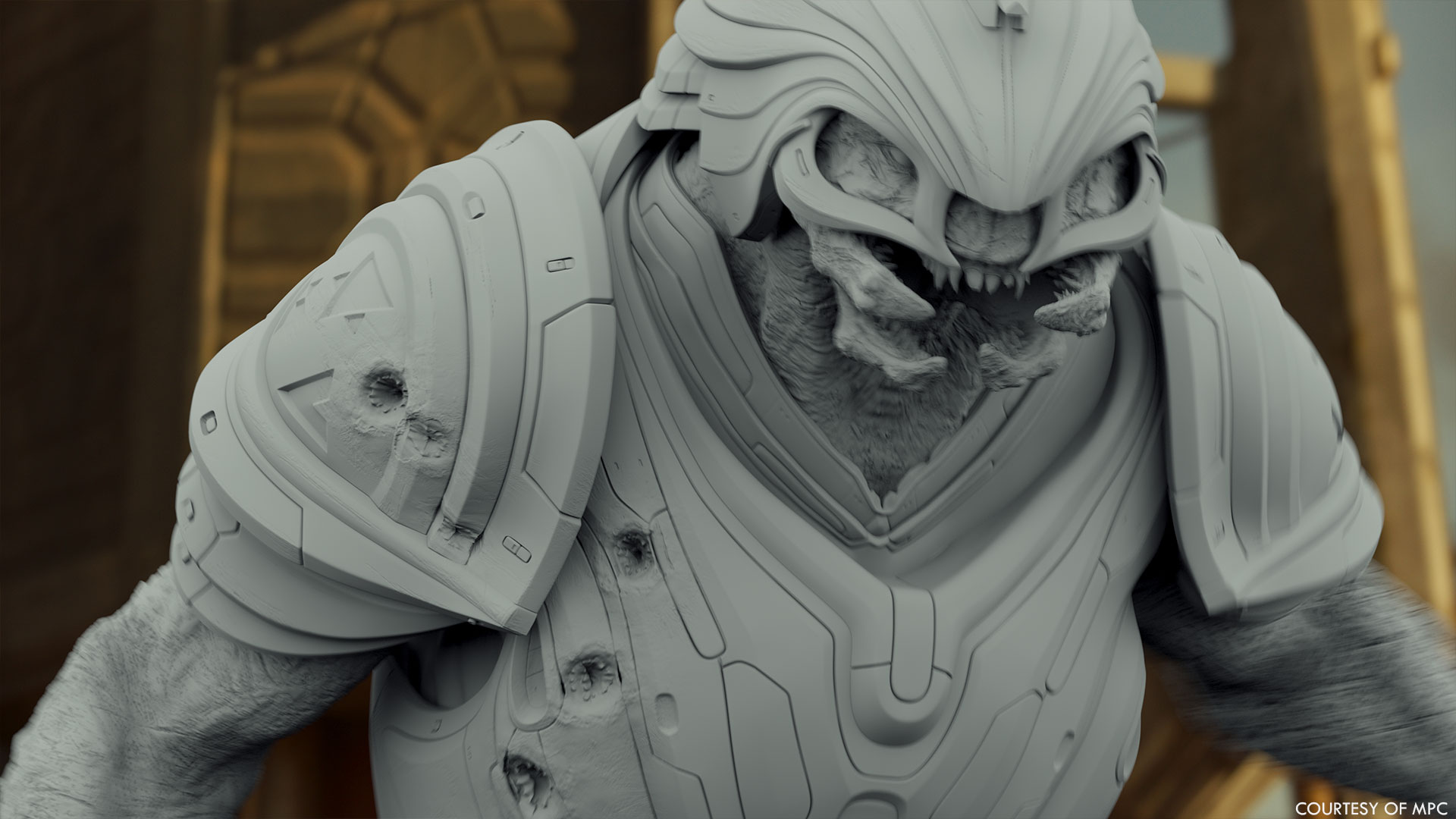
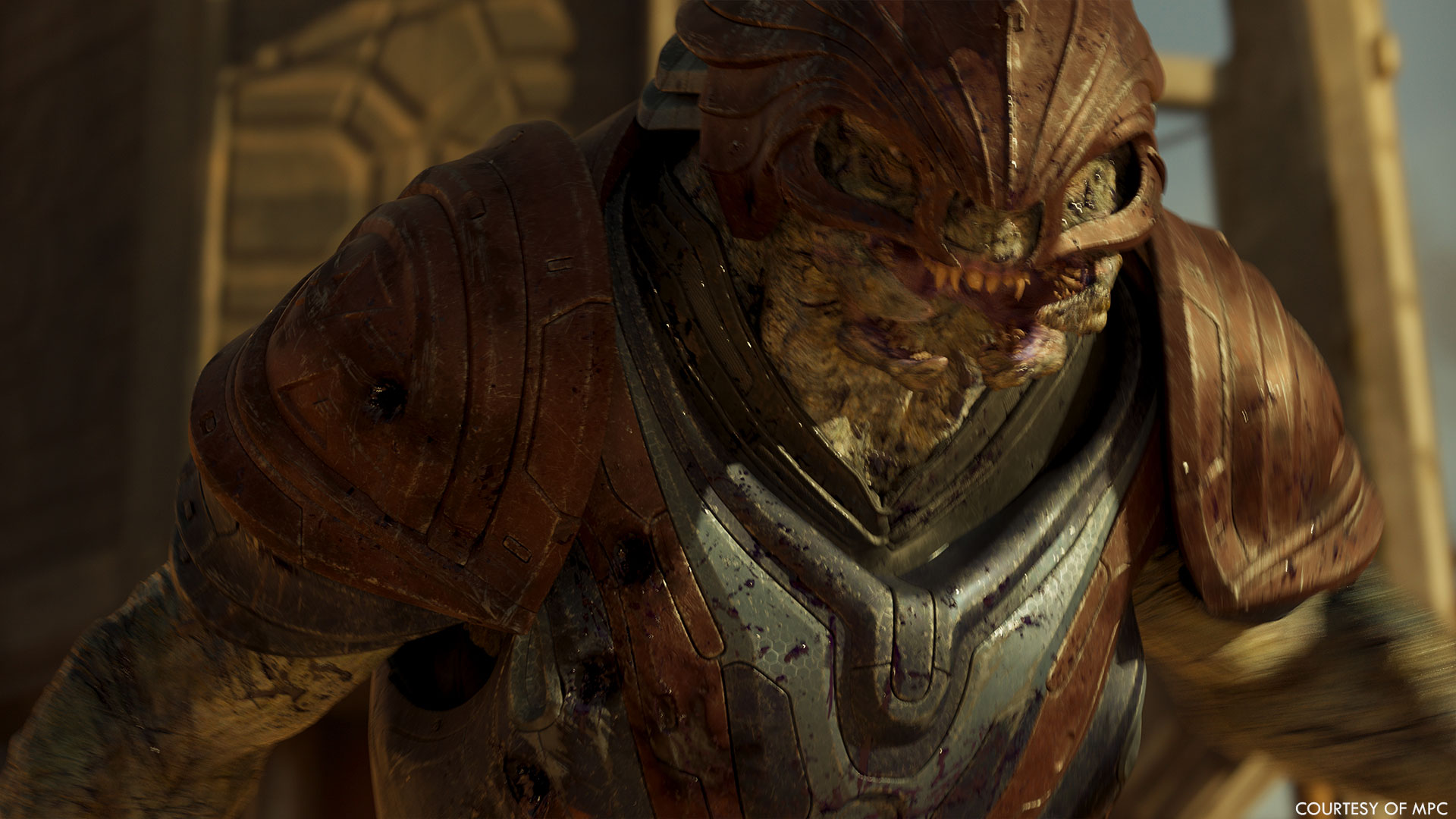
What is your favorite shot or sequence?
Craig Calvert // Even though Halo is built upon high action, I really love moments of relative quiet in VFX. So, my favorite shots are of the Prophet of Mercy speaking with Makee in the Council Chambers. There’s no place to hide, and we were very pleased with the results.
Martin Hesselink // A parent has no favorite children. But I do. Mercy was my favorite character in the show. The shots were really well done. The character was superbly animated and looked incredible. It’s rare to find such a captivating CG character that conveys a range of emotional performances. Hats off to Julian Bleach for the voice acting of Mercy. And to our teams for bringing him to life. So good! Helps he was featured with Charlie Murphy in most sequences. She was an incredible part of the show as well.
What is your best memory of this show?
Craig Calvert // The people. We had with us just such a talented group that were always pushing to improve the work and keep us moving forward, which made the culture of the show very welcoming and extremely rewarding. It was a happy/sad day when we finished the last shot.
Martin Hesselink // Being in the thick of production with our amazing team, constantly delighting in the results of our hard work, and bringing this epic universe to life. We really had the chance to flex our skills and contribute to the shaping of this amazing show. For me, as a fan, that’s both fun and exhilarating. A close second is working with Craig. I’ve worked with him on several projects and learned so much from him over the years. He constantly amazes me.
How long have you worked on this show?
Craig Calvert // From start to finish it was over 3 years.
Martin Hesselink // We started the development of the show about three years ago, I’ve been on since the beginning and saw it through to the end.
What’s the VFX shots count?
Craig Calvert // MPC contributed 420 shots to season 1.
What was the size of your team?
Craig Calvert // Oh, it was a lot! Over the 3 years we worked, there were more than 800 people that logged hours to the shots. Some of the team was us the entire length, but many were tasked for a few months at a time as the needs of each sequence ramped up and down.
What is your next project?
Craig Calvert // I am currently working on Tim Burton’s “Wednesday.”
What are the four movies that gave you the passion for cinema?
Martin Hesselink // I’ve been a film fan all my life, I love the characters, the stories, the imagination. Most of all, I love monsters. Jurassic Park, T2, Aliens and Predator.
A big thanks for your time.
// Halo – VFX Breakdown – MPC
WANT TO KNOW MORE?
MPC: Dedicated page about Halo on MPC website.
© Vincent Frei – The Art of VFX – 2022




